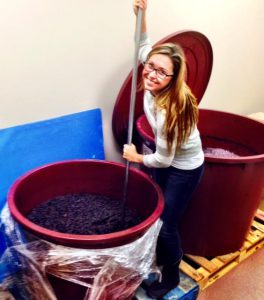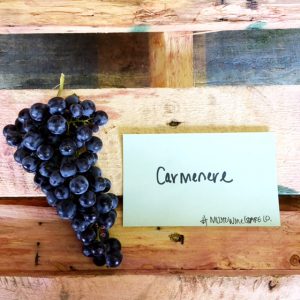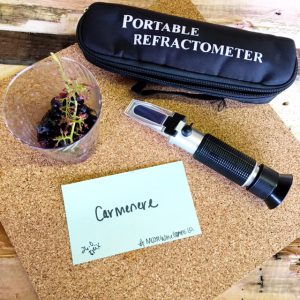How to Make Carmenere Wine from Chile
Carmenere is a grape with a very “peppered” history. It has its roots in Bordeaux as it was widely planted in the Medoc region of France by the Ancient Romans. It was often times used as a blender, like Petit Verdot, and is considered one of the original six Bordeaux grape varieties. There is a legend that says Carmenere is actually a clone of Cabernet Sauvignon as both grapes share a similar lineage. In 1855 Carmenere cuttings were brought over to Chile, and for a long time Chilean Carmenere was mistaken for Merlot vines! It wasn’t until the 19th century that they were able to distinguish between the two. Both grapes are now used in 50/50 blends, producing delicious fruit forward wines.
Now Carmenere is considered a bold standalone grape and wine. Deep crimson in color, with bold dark berries on the palate, this wine is made for the adventurous. Chile has become one of the top Carmenere producing regions. This is because Chile has minimal rainfall, and soils composed of volcanic-alluvial, sand, clay, and decomposed granite. Carmenere flourish’s here. MWG’s Carmenere grapes and juices are sourced from the Colchagua and Curico Valleys in the heart of Chile. The micro-climates throughout these valleys allow Carmenere to mature to its full potential.
Flavor Profile:
Blackberry jam, ripe raspberry, baking spices, plum, and at times – vanilla, licorice, green pepper, and black pepper.
Yeast Suggestions:
-
CSM: Reduces vegetal aromas, brings out intense complex flavors of berries, spice, and licorice.
-
D254: Brings out fruit flavors such as berry, plum, and mild spice
-
BDX: Promotes soft tannins, secures color, and ferments at low temperatures
Making Chilean Carmenere:
-
Crush your grapes into your fermentation vessel.
-
Add your pectic enzyme or color pro and let the must warm up overnight.
-
Please Note: we DO NOT suggest doing a cold soak on the Chilean grapes. They have traveled very far already, and it is better for your flavor profile if they do not sit on the skins for extra contact time. This can cause further extraction of methoxypyrazine (green bell pepper).
-
-
After 24 hours take your Brix, TA, and pH measurements. Make adjustments if needed.
-
Once your must has hit the temperature required by your selected yeast, you can pitch your yeast.
-
Fermentation tannins can be added at this point. We suggest adding Tannin FT Rouge and Opti-Red when making Carmenere.
-
If you are using additional yeast nutrients you will want to add them at the right time as well. Fermaid O is added at the beginning of fermentation (1 day after you set your yeast). Fermaid K is added at 1/3 depletion of Brix. Follow the directions on the yeast nutrient packages.
-
-
After you have made your adjustments and added your yeast, cover you fermentation vessel with a sheet or cheese cloth. This will allow gases to release during fermentation, but protect the must for outside microbes and fruit flies.
-
Every day during fermentation punch down your must at least three times a day, take your Brix measurement, and temperature measurements. It is recommended to record these values each day.

-
You want to make sure your Brix levels are dropping and are having a healthy fermentation. You also want to monitor your temperature levels. If your temperature levels get too high you might “burn off” some aromas, and if your temperature levels get too low you might get a stuck fermentation.
-
When your hydrometer reaches 0.90 you are at dryness
-
-
We suggest adding Malolactic culture to your Carmenere. It will help convert the harsh “green apple like” acid to “creamy like” acid, producing a more supple mouthfeel.
-
There are three time periods you can add Malo. We suggest adding your Malo 24-48 hours after fermentation has started. You can purchase a Chromatography test to check that Malo has completed.
-
-
When you hydrometer reaches a brix of -2 – 0 (SG of .990 to 1.000) your are at dryness and can press your must.
-
Once your juice has been transferred into your aging vessel make sure to check your wine and airlock weekly. Be sure it is topped off.
-
Rack every 1-2 months.
-
Bottle after 8-12 months or transfer into oak for more aging.
Recipe by Winemaker Christina Musto








